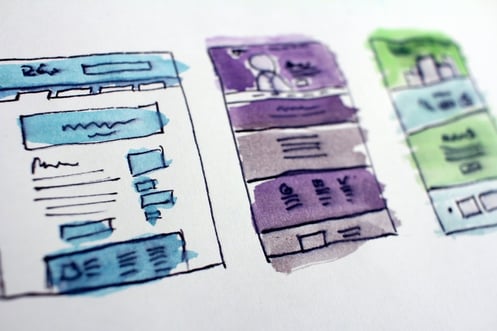Everything You Need to Know About Attribution Modeling

Say someone purchased something from your online store, filled out a form, or downloaded an eBook. What made this person convert? The email you sent out last week? That incredible blog you posted? Perhaps it was something else entirely: A banner ad, a Facebook post, or something one of your sales agents said.
Discovering what makes someone convert is like identifying the killer in an Agatha Christie novel. You put on your detective hat, piece together the clues, and try to crack the code. But, identifying conversion points is mostly guesswork. You can never really be sure.
That's why attribution modeling is so critical to marketers. It tells them the most important touchpoints that preceded a conversion so they can discover whether that email or blog or both convinced someone to make a purchase or download an eBook.
What is Attribution Modeling and Why Should You Care?
Attribution modeling is a method used by the world's best marketers to determine which touchpoint (or which channel or piece of content) triggered a prospect to engage with you or take action in a conversion path.
Attribution Modeling Conversion Example
Say Sally receives three emails during your most recent marketing campaign. Each contains a call-to-action to fill out a form for receive a free webinar. Sally opens the first two emails but takes no further action. After opening the third, she clicks the link in the call-to-action and fills out your form.
An attribution model assigns her conversion to each of these emails and weighs them based on their importance to you. Since she converted after the last email, that should probably receive the highest weight, while the other emails may have simply peaked her interest. The model provides context to the conversion: Sally converted a little after 2 p.m. on the third Saturday in September after receiving three emails in your most recent funnel and clicking on the third.
What are the Benefits of Attribution Modeling?
Attribution models pinpoint the precise moment someone converts, and this is useful for learning:
- Which channels/messages (email, social media, paid-for ads, etc.) convert the most prospects
- Which channels/messages are part of the funnel for the biggest conversions, even if they don’t cause a direct conversion themselves
- Wherein the funnels prospects are most likely to convert
- What months/days/times prospects are most likely to convert
- How prospects become fully-fledged customers
- Why prospects take action after engaging with a particular channel/message
There's another benefit to attribution modeling: It gives marketers credit for converting prospects. Say Bob created the email that converted Sally and she eventually became a client via a Sales Process. Bob (and the marketing team) should get the credit for that new client (or at least some credit).
4 Ways to Create an Incredible Attribution Model
1. Define Your Attribution Model
What do you want your model to reveal? The final touchpoint before a conversion? The three final touchpoints before a conversion? A weighted average of each touchpoint in the last year? Or, a model that gives the highest weight to the first and last touchpoint? Be specific.
2. Decide What to Measure
Decide what you want your model to measure. Campaigns? Channels? Sources? Marketing initiatives? Each of these options will yield different metrics and avenues for measurement.
3. Define Success
What do you consider a successful touchpoint? What do you consider a conversion? There are various measurements of success — ROI, revenue, engagement, retention, etc. Define success before creating your model.
4. Quantify Success
If you don't consider a marketing channel/message the final touchpoint before a conversion, use micro-key performance indicators (KPIs) to measure smaller actions that contribute to a conversion. For example: Bob's email didn't convert Sally; the design of the form she filled out did. But, Bob's email certainly contributed to Sally's conversion.
Create an Attribution Model Now
Attribution modeling provides real-time intelligence into the specific marketing touchpoints that converts prospects, making it a valuable addition to your campaign measurement stack. Follow the tips above to get additional value from your models.
Make your digital marketing even more explosive with RDA's Art of the Possible Workshop. Discover how to visualize innovative solutions for operational optimization, employee empowerment, and customer engagement.
